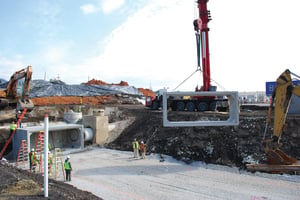INSPECTION
Designed for 100 years. Proven to last more.
With a long design life and being less installation-sensitive, using concrete means less risk and more cost effective after the pipe is in the ground.
Once a pipe is in the ground, it should be there to stay for generations ahead. To ensure that it will function as intended and for as long as possible, an inspection of pipe is necessary. Post-installation inspection (or PII) provides that proof of proper installation and structural integrity prior to the close out or final acceptance of the project.
Risk Management
The proof of design for a concrete pipe system is all but complete once the pipe leaves the plant as 85% of the strength the system is accounted for in the pipe itself--making it less dependent on the soil envelope and installation process. This is counter to other pipe materials that are highly dependent on the quality of the installation to ensure the proper function of the system. This means that the system structure is not truly confirmed until it is completely installed, risking added cost, time, and frustration in both the short and long term.
Frequently Asked Questions
Concrete Pipe Design Manual
The Concrete Pipe Design Manual is an indispensable tool to help engineers select the type, size, and strength requirements of pipe. It eliminates the lengthy computations and includes standard installations using the indirect design method. More than 330 pages of tables and figures covering hydraulics of sewers and culverts, live loads and earth loads, supporting strengths and supplemental design data are listed. Detailed example problems of specific applications illustrate the use of the time saving design aids included in the manual.
The Design Manual is a companion volume to the Concrete Pipe Handbook.



